Public Townscape
Diploma Thesis, Florian Rüger
Topic
"public townscape" is an island in Second Life and an experiment about the emerging and the development of a public space on it. It is a place to study the emerging of a free sphere for action, interaction and communication. This thesis consists of two major parts. The first part reviews and discusses definitions and theories of public space, cyberspace etc. The second part describes an experiment regarding public space in the virtual world of Second Life.
If one comprehends the term "cyberspace" not only technically, is a literary metaphor for new sites of consciousness. It does not solely imply linked homepages, online games and virtual worlds, but also an expanding space of data. It is a place for information, interaction and communication. All of these are components that took place more or less exclusively on squares and in public buildings of our cities and villages not a long time ago.
The Image of the City in Second Life
However the environment of Second Life always reflects either the image of the city or the landscape. Among others there are highly imaginative landscapes, skiing areas and reefs of corals. Nevertheless the majority of Second Life consists of more or less dense built-up areas. Those often are divided into the three huge domains housing, business and industrial areas. Structures like "suburban residential areas", the "urban sprawl", a kind of "city of themes", or simulations of a metropolis can be found.
The complete landmass of Second Life is about three times the size of Munich-city. Second Life had about 10 million residents in October 2007. Its landmass is divided into many small islands and several big continents.
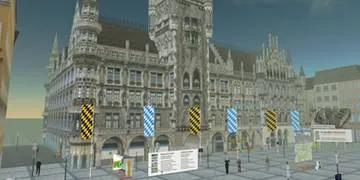
Munich Rathaus in Second Life
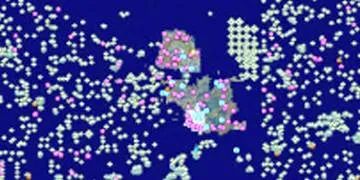
The world-map of Second Life, Jun 2007
The Experiment
The experiment of the diploma thesis itself took place on the island "public townscape" on 65536 virtual square meters. People from all over Second Life were invited to take possession of this island and use it as a free public space and sphere of action. There were no rules, guidelines, controls or restrictions in this public space.
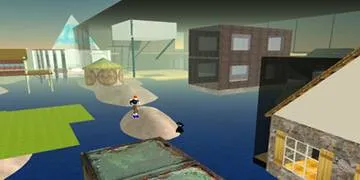
The first people and objects on "public townscape", July 22nd 2007
The "Phase of Anarchy"
Already after the first few hours the island has opened to the public, it was crowed with people and objects like houses, plants etc.. people have built there. People took possession of the island by building on it.
A hard coded limiting-factor of Second Life quickly lead to conflicts among the visitors of the island. An island can only keep a restricted number of built objects. Once this limit was reached, struggles for those resources have begun.
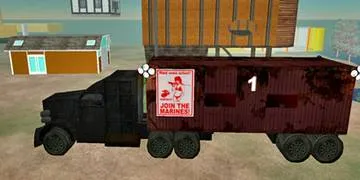
Military actions on "public townscape"; fight for raw materials; July 26th 2007
The "Phase of Self-Regulation"
Guidelines and settings of self-regulation were developed in order to find a remedy for the aggressive actions in the formerly unregulated public space. Furthermore, the basic type of the experiment was enriched and developed from the pure “seizure of the public space” to a multifaceted offer what a public space can be.
The avatars of Second Life were empowered to develop the guidelines for their public space mostly on their own. Many people took part in several workscopes like taking care of raw materials, organizing events or controlling and developing the guidelines.
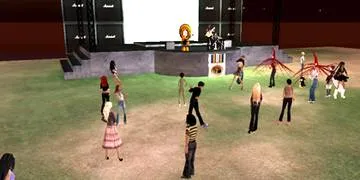
The first music event on "public townscape", after the introduction of rules and guidelines; Aug 26th 2007
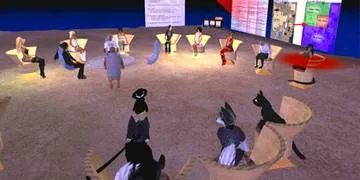
Avatars discussing rules and guidelines; Aug 15th 2007
The Conclusion
The island "public townscape" was dealing with the exciting contrast "puplic-private", "freedom-regulation" and "anonymity and social control", just like any public space, real or virtual. It cannot be seen as a perfect utopian public space. It had to deal with the same problems as a real public space.
The diploma thesis has been published as 3d-book in Second Life and is available to read there.
More information at http://publictownscape.net
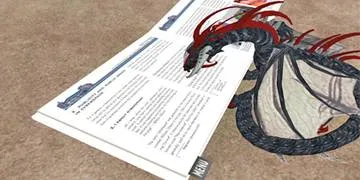
A dragon is reading the diploma thesis in Second Life
